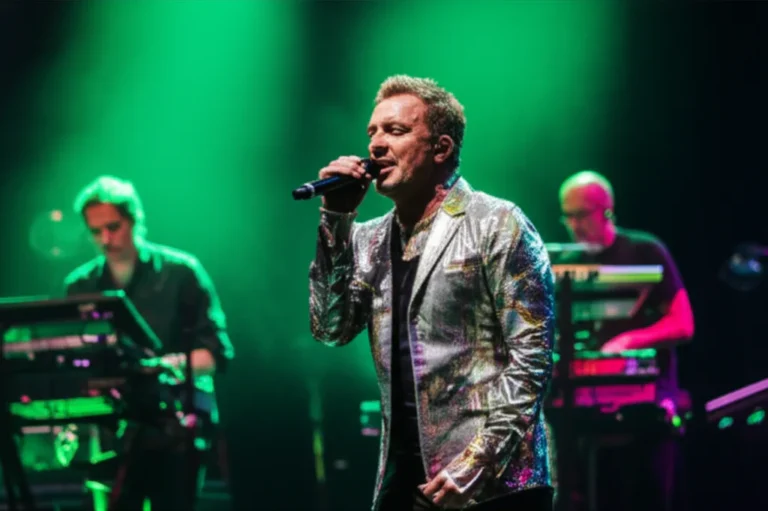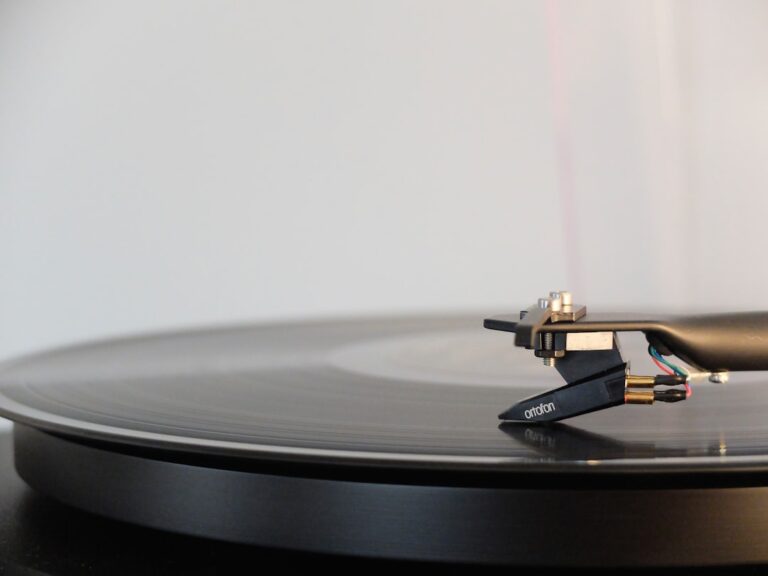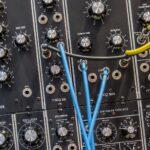Support our educational content for free when you purchase through links on our site. Learn more
Kraftwerk Age Revealed: 12 Fascinating Facts About the Electronic Legends 🎹 (2025)
When you think of Kraftwerk, you probably picture sleek robots, hypnotic synth lines, and a band that seems to exist outside of time itself. But have you ever wondered just how old Kraftwerk really is—and how their age has shaped their sound, image, and legacy? Spoiler alert: this isn’t just a story about getting older; it’s about timeless innovation and a band that has been powering the synth-pop engine for over half a century!
From their formation in 1970 by two visionary students in Düsseldorf to their Grammy-winning 3D live shows in the 21st century, Kraftwerk’s journey is a masterclass in evolving with technology while staying true to a futuristic ethos. Later in this article, we’ll reveal surprising age-related trivia about the band members, explore how their ages influenced their groundbreaking music, and uncover the secret behind their ageless robotic image. Plus, we’ll pay tribute to co-founder Florian Schneider’s enduring legacy and explain why Kraftwerk’s age is less about years and more about musical immortality.
Key Takeaways
- Kraftwerk has been active for over 50 years, with members born in the mid-1940s to early 1950s, making them pioneers who matured alongside electronic music itself.
- Their robotic image and minimalist style helped them transcend the typical aging process, creating a timeless persona that still captivates audiences.
- The band’s musical evolution mirrors technological advances, from custom-built synths in the 1970s to cutting-edge digital performances today.
- Florian Schneider’s passing in 2020 marked a pivotal moment, but Ralf Hütter continues to lead Kraftwerk’s innovative legacy.
- Kraftwerk’s age teaches us that longevity in music comes from innovation, consistency, and embracing change rather than resisting it.
Ready to plug into the full story? Let’s power up and dive deep into the fascinating world of Kraftwerk’s age and enduring influence!
Table of Contents
- ⚡️ Quick Tips and Facts About Kraftwerk’s Age
- 🕰️ The Timeless Journey: Kraftwerk’s Age and Evolution Through the Decades
- 👥 Kraftwerk Members’ Ages and Their Impact on the Band’s Sound
- 🎶 Kraftwerk’s Musical Milestones: Age-Defying Albums and Tracks
- 📺 Visual Age: Kraftwerk’s Videography and Their Futuristic Image
- 🏆 Awards and Achievements Over the Years: Celebrating Kraftwerk’s Longevity
- 🌍 Kraftwerk’s Influence Across Generations and Genres
- 🔍 Age-Related Trivia: Fun Facts About Kraftwerk’s Band Members and Career
- 📅 Timeline of Kraftwerk: Key Dates and Age Highlights
- 🧑🎤 The Legacy of Florian Schneider: Remembering a Kraftwerk Co-Founder
- 💡 How Kraftwerk’s Age Reflects in Their Music Technology and Innovation
- 🎤 Kraftwerk Live: Age and Experience on Stage
- 🧠 What Kraftwerk’s Age Teaches Us About Longevity in the Music Industry
- ✅ Conclusion: Kraftwerk’s Age as a Testament to Enduring Creativity
- 🔗 Recommended Links for Kraftwerk Fans
- ❓ FAQ: Your Burning Questions About Kraftwerk’s Age Answered
- 📚 Reference Links and Sources
Hello, fellow synth-pop connoisseurs! Welcome to Synth Pop™, where we live and breathe the blips, beeps, and pulsating rhythms of electronic music. Today, we’re plugging into a topic that’s as fascinating as the band itself: Kraftwerk’s age. How has a band that formed over half a century ago remained so perpetually futuristic? Let’s dive into the mainframe and find out.
⚡️ Quick Tips and Facts About Kraftwerk’s Age
Right off the bat, let’s download some core data. If you’re short on time, here are the essential stats on Kraftwerk’s incredible journey through time.
| Factoid 🤖 | The Data Download 💾 |
|---|---|
| Band Formation | 1970 in Düsseldorf, Germany. |
| Current Age of Band | Over 50 years and counting! |
| Ralf Hütter’s Age | Born August 20, 1946, making him 79 years old. |
| Florian Schneider’s Age | Born April 7, 1947; passed away in 2020 at age 73. |
| Key Longevity Awards | Grammy Lifetime Achievement Award (2014), Rock & Roll Hall of Fame (2021). |
| Ageless Concept | Adopted a “robot pop” style and robotic image to create a timeless persona. |
🕰️ The Timeless Journey: Kraftwerk’s Age and Evolution Through the Decades
To truly understand Kraftwerk’s age, you have to see it as a feature, not a bug. Their entire career, which we explore in-depth in our main Kraftwerk article, is a masterclass in evolving without losing your core programming.
It all began when Ralf Hütter and Florian Schneider met as students in the late 1960s, buzzing with the experimental energy of the Krautrock scene. They officially formed Kraftwerk (German for “power station”) in 1970, setting out to create a new musical language for a post-war Germany hungry for a new identity.
The 1970s were their breakout years. After a few experimental albums, they streamlined their lineup, bringing in Wolfgang Flür and Karl Bartos to form the “classic” quartet. With the release of Autobahn in 1974, they floored the accelerator on a new genre. The world had never heard anything like it. This wasn’t just music; it was “machinemusik,” as the BBC noted, a sound that was as sleek and modern as the German motorways it celebrated.
As they entered the 1980s, Kraftwerk became the undisputed architects of the burgeoning synth-pop scene. Their influence is all over the best of 80s Synth Pop, with albums like Computer World (1981) proving scarily prophetic. They even scored a surprise UK #1 hit in 1982 with “The Model,” a song originally released years earlier.
The 1990s and 2000s marked a period of change and refinement. Bartos and Flür departed, and co-founder Florian Schneider left in 2008. Yet, the Kraftwerk machine kept running, with Hütter steering the project towards spectacular live performances. They began touring with stunning 3D visuals, transforming their concerts from gigs into immersive art installations at prestigious venues like New York’s MoMA and London’s Tate Modern.
👥 Kraftwerk Members’ Ages and Their Impact on the Band’s Sound
You can’t talk about the band’s age without looking at the men behind the machines. The ages and eras of its key members are crucial to understanding their sonic evolution.
- Ralf Hütter (born 1946): The ever-present conductor. As the sole remaining original member, Hütter is the guardian of the Kraftwerk concept. His vision has guided the band for over 50 years, ensuring the core identity remains intact while adapting the technological interface for modern audiences.
- Florian Schneider (1947-2020): The sonic architect. Florian, who sadly passed away from cancer at 73, was the innovator who sculpted Kraftwerk’s unique electronic textures. His departure in 2008 marked the end of an era, but his DNA is encoded in every synthesizer hum and vocoder-processed word.
- Wolfgang Flür (born 1947) & Karl Bartos (born 1952): The rhythmic engine. Joining in the mid-70s, Flür and Bartos brought a propulsive, danceable energy to the band’s intellectual concepts. They were the human pulse within the machine, co-writing some of the band’s most iconic tracks before their departures in 1987 and 1990, respectively.
Here’s a quick look at the classic lineup’s timeline:
| Member | Born | Role | Years Active in Classic Lineup |
|---|---|---|---|
| Ralf Hütter | Aug 20, 1946 | Vocals, Keyboards | 1970–Present |
| Florian Schneider | Apr 7, 1947 | Synthesizers, Vocoder | 1970–2008 |
| Wolfgang Flür | Jul 17, 1947 | Electronic Percussion | 1973–1987 |
| Karl Bartos | May 31, 1952 | Electronic Percussion, Keyboards | 1975–1990 |
🎶 Kraftwerk’s Musical Milestones: Age-Defying Albums and Tracks
Some albums just don’t get old; they become timeless. Kraftwerk’s discography is a prime example.
- Autobahn (1974): This was the sound of youthful ambition. The 22-minute title track was a bold, hypnotic journey that put them on the global map. ✅ It was audacious and utterly new.
- Trans-Europe Express (1977): Here, the concept is mature and refined. The music is sleek, rhythmic, and impossibly cool, creating a sonic landscape of romantic, old-world Europe meeting a technological future.
- The Man-Machine (1978): The pinnacle of their “robot pop” identity. Tracks like “The Robots” and “The Model” cemented their image and sound, creating some of the most Iconic Synth Pop Songs ever recorded.
- Computer World (1981): An album so far ahead of its time it’s still catching up to us. It explored themes of digital life, surveillance, and online dating decades before they became everyday reality. 🤯
- 3-D The Catalogue (2017): This live album, which won a Grammy for Best Dance/Electronic Album, wasn’t just a release; it was a curation of their life’s work. It proved that even in their 70s, they could be celebrated not just for their past, but for their present.
📺 Visual Age: Kraftwerk’s Videography and Their Futuristic Image
Have you ever wondered why Kraftwerk never seems to age? Because they outsourced aging to their robot counterparts! 🤖
From the mid-70s on, they adopted a uniform, robotic look, often sending mannequins to photoshoots in their place. This was a stroke of genius. While other bands withered on the vine of changing fashions, Kraftwerk’s aesthetic remained consistently, coldly futuristic.
Their music videos for “The Robots” and “The Model” are perfect examples. The stiff, synchronized movements and deadpan expressions created an uncanny, ageless persona. This visual identity has been a key part of their longevity, allowing them to perform today, with Ralf Hütter in his late 70s, without any sense of nostalgic disconnect. The man may age, but the Musik-Arbeiter (music worker) at his console is eternal.
🏆 Awards and Achievements Over the Years: Celebrating Kraftwerk’s Longevity
For many artists, awards are a young person’s game. For Kraftwerk, the biggest accolades came late, a testament to their enduring influence.
- 2014: Grammy Lifetime Achievement Award: The Recording Academy officially recognized their monumental contribution to music, decades after their most famous work was released.
- 2017: Grammy Award for 3-D The Catalogue: This wasn’t a lifetime award; this was for a contemporary project, proving they could still compete and win.
- 2021: Rock & Roll Hall of Fame Induction: Inducted in the “Early Influence” category, the Hall of Fame acknowledged that countless genres would sound completely different without them.
These late-career honors show that Kraftwerk’s age isn’t about fading away; it’s about the slow, steady accumulation of influence until it’s simply too massive to ignore.
🌍 Kraftwerk’s Influence Across Generations and Genres
How can a band that started in 1970 still be relevant? Because they didn’t just make music; they created a toolbox that entire genres were built from.
David Bowie was an early adopter, even naming the track “V-2 Schneider” on his Heroes album after Florian. But the influence didn’t stop there. Think of Depeche Mode, New Order, or Daft Punk—you can hear Kraftwerk’s DNA in all of them. As Martin Gore of Depeche Mode said, “For anyone of our generation involved in electronic music, Kraftwerk were the godfathers.”
Their reach extends far beyond synth-pop. Hip-hop pioneers like Afrika Bambaataa sampled “Trans-Europe Express” for the seminal “Planet Rock.” Pop superstars from Coldplay (who famously borrowed the melody from “Computer Love” for their hit “Talk”) to Jay-Z have sampled their work. They are, as some have called them, “the electronic Beatles,” a foundational influence that is now simply part of the musical atmosphere.
The fantastic documentary “Kraftwerk and The Electronic Revolution” (which you can find at #featured-video) does a deep dive into this very topic, showing just how far their sonic ripples have spread.
🔍 Age-Related Trivia: Fun Facts About Kraftwerk’s Band Members and Career
- Ralf the Constant: Ralf Hütter is the only member to have performed on every single Kraftwerk album.
- The Golden Age: The iconic lineup of Hütter, Schneider, Flür, and Bartos was only together for about 12 years, from 1975 to 1987.
- The Jackson Five? No Thanks: The band famously turned down a request to collaborate with Michael Jackson. Can you even imagine what that would have sounded like?!
- Late Bloomer: Their biggest UK hit, “The Model,” reached #1 in 1982, a full four years after it was first released on The Man-Machine.
📅 Timeline of Kraftwerk: Key Dates and Age Highlights
| Year | Event | Age-Related Significance |
|---|---|---|
| 1970 | Kraftwerk is formed by Hütter and Schneider. | The beginning of a 50+ year journey. |
| 1975 | Karl Bartos joins, completing the classic lineup. | The band’s most iconic and productive era begins. |
| 1987 | Wolfgang Flür departs the band. | The first major change to the classic quartet. |
| 1990 | Karl Bartos leaves Kraftwerk. | The end of the classic lineup’s studio contributions. |
| 2008 | Florian Schneider leaves after nearly 40 years. | Hütter becomes the sole founding member. |
| 2014 | Awarded the Grammy Lifetime Achievement Award. | Formal recognition of their decades of innovation. |
| 2020 | Florian Schneider passes away at age 73. | The loss of a pioneer and a key part of the Kraftwerk story. |
| 2021 | Inducted into the Rock & Roll Hall of Fame. | Cementing their legacy as foundational influencers. |
🧑🎤 The Legacy of Florian Schneider: Remembering a Kraftwerk Co-Founder
The passing of Florian Schneider in 2020 at the age of 73 was a profound moment for the electronic music world. He was more than just a co-founder; he was the band’s chief sound designer, a “sound fetishist” who could sculpt electricity into emotion.
He was the man behind the revolutionary vocoder vocals and the custom-built synthesizers that defined their sound. While Ralf Hütter was the conceptualist, Florian was the sonic scientist in their Kling Klang studio. His legacy is not just in the songs he co-wrote but in the very texture of modern music. David Bowie’s tribute on “V-2 Schneider” is a perfect testament to the respect he commanded among his peers.
💡 How Kraftwerk’s Age Reflects in Their Music Technology and Innovation
Kraftwerk didn’t just use technology; they grew with it.
In their youth, when the synths they needed didn’t exist, they simply built their own. Their Kling Klang studio was less a recording space and more a laboratory for sonic invention. They pioneered the use of drum machines, custom sequencers like the Synthanorma, and vocoders.
As they matured, they mastered the available technology, using instruments like the Minimoog and ARP Odyssey to perfect their sound.
In their later years, they showed a remarkable ability to adapt. Instead of becoming relics, they embraced the digital age, transitioning their entire live show to laptops and custom software from 2002 onwards. This willingness to evolve with technology is a key reason they still sound like the future.
👉 Shop Classic Synth Brands on: Amazon | Etsy
🎤 Kraftwerk Live: Age and Experience on Stage
A Kraftwerk show today is a vastly different experience from their early performances.
- Early Gigs: In the early 70s, their shows were more experimental, sometimes just a duo with a simple drum machine.
- The Classic Quartet: The tours of the late 70s and early 80s saw them bring the entire Kling Klang studio on the road, a massive undertaking that showcased their “musical worker” ethic.
- The 3D Spectacle: Today’s shows are breathtaking multimedia events. With the audience wearing 3D glasses, the performance is an immersive fusion of sound and visuals. Ralf Hütter, now an elder statesman of electronic music, stands stoically at his console, his age lending a powerful sense of gravitas and history to the futuristic sounds emanating from the stage.
🧠 What Kraftwerk’s Age Teaches Us About Longevity in the Music Industry
So, what’s the secret formula for a 50+ year career at the cutting edge? We think it boils down to a few key lessons:
- Have a Timeless Concept: By focusing on universal themes like technology, travel, and the relationship between humans and machines, their music avoids feeling dated.
- Control Your Image: Their reclusive nature and robotic aesthetic created a powerful mystique that has never faded. ✅
- Quality Over Quantity: Long silences between albums ensured that every release was a significant event, not just another product.
- Evolve with the Tools: They never became a nostalgia act because they never stopped innovating their sound and their stagecraft. They aged with technology, not against it.
✅ Conclusion: Kraftwerk’s Age as a Testament to Enduring Creativity
After cruising through over five decades of Kraftwerk’s sonic and visual evolution, one thing is crystal clear: age is not a limitation but a superpower for this pioneering band. From their student days in late-60s Düsseldorf to their Grammy-winning 3D live shows in the 21st century, Kraftwerk has continuously redefined what it means to be timeless in music.
Their age-defying approach—melding human creativity with machine precision—has allowed them to remain relevant and influential across generations. While the passing of Florian Schneider marked the end of an era, Ralf Hütter’s ongoing leadership ensures the Kraftwerk legacy hums on, as futuristic and vital as ever.
If you’ve ever wondered how a band can stay fresh for 50+ years, Kraftwerk’s story is your answer: innovate relentlessly, control your image, and embrace technology as a partner, not a threat. Whether you’re a synth-pop newbie or a seasoned fan, Kraftwerk’s age is a badge of honor, not a relic of the past.
🔗 Recommended Links for Kraftwerk Fans
Ready to dive deeper into Kraftwerk’s world or explore the gear that shaped their sound? Check out these curated links:
-
👉 Shop Classic Synthesizers on Amazon:
Minimoog Synthesizer | ARP Odyssey | Korg Synthesizers -
Books About Kraftwerk and Electronic Music:
“Kraftwerk: Publikation” by Kraftwerk
“Electronic and Experimental Music: Technology, Music, and Culture” by Thom Holmes
“Synthesizer Evolution: From Analogue to Digital (and Back)” by Oli Freke -
Explore More Synth Pop Classics:
80s Synth Pop Hits | Iconic Synth Pop Songs
❓ FAQ: Your Burning Questions About Kraftwerk’s Age Answered
How old are the members of Kraftwerk?
The classic Kraftwerk members were born in the mid to late 1940s and early 1950s. Ralf Hütter, the only original member still active, was born in 1946 and is currently in his late 70s. Florian Schneider, co-founder and key innovator, was born in 1947 and sadly passed away in 2020 at age 73. Wolfgang Flür and Karl Bartos, who contributed significantly during the band’s golden era, were born in 1947 and 1952, respectively.
When was Kraftwerk formed?
Kraftwerk was officially formed in 1970 in Düsseldorf, Germany, by Ralf Hütter and Florian Schneider. The duo had been collaborating since 1968, initially as part of the group Organisation before evolving into Kraftwerk.
What is the average age of Kraftwerk band members?
Considering the classic lineup’s birth years (1946-1952), the average age during their peak in the late 1970s was roughly late 20s to early 30s. Today, surviving members like Ralf Hütter are in their late 70s, reflecting a remarkable longevity in the music industry.
How has Kraftwerk’s music evolved with the members’ ages?
Kraftwerk’s music matured alongside its members. Early works were experimental and raw, reflecting youthful exploration. As the band aged, their sound became more polished, conceptual, and technologically sophisticated, embracing emerging synth and digital technologies. Their later works and live shows integrate cutting-edge visuals and software, demonstrating a seamless blend of experience and innovation.
Are Kraftwerk members still active in their 70s?
Yes! Ralf Hütter continues to lead Kraftwerk, performing live and overseeing new projects well into his 70s. Their recent tours featuring 3D visuals and remastered classics show that age has not dulled their creative edge or performance energy.
What age were Kraftwerk members when they released their first album?
When Kraftwerk released their self-titled debut album in 1970, Ralf Hütter and Florian Schneider were both about 23-24 years old, fresh from their conservatory studies and eager to forge a new electronic sound.
How does Kraftwerk’s age influence their synth pop style?
Kraftwerk’s age is embedded in their style as a symbol of timeless futurism. Their robotic image and minimalist soundscapes reflect a deliberate distancing from fleeting trends, instead creating a perpetual “now” that transcends generational boundaries. Their longevity allows them to draw from decades of technological progress while maintaining a consistent artistic vision.
📚 Reference Links and Sources
For further reading and verification, check out these reputable sources:
- Kraftwerk – Wikipedia
- BBC News: Florian Schneider, Kraftwerk Co-Founder, Dies at 73
- NPR: Co-Founder of Kraftwerk Florian Schneider Has Died
- Grammy Awards – Kraftwerk Lifetime Achievement
- Rock & Roll Hall of Fame – Kraftwerk Induction
- Kraftwerk Official Website
We hope this deep dive into Kraftwerk’s age and legacy has sparked your curiosity and appreciation for one of electronic music’s most enduring pioneers. Ready to explore more? Check out our other Synth Pop™ articles and keep the synths humming!






